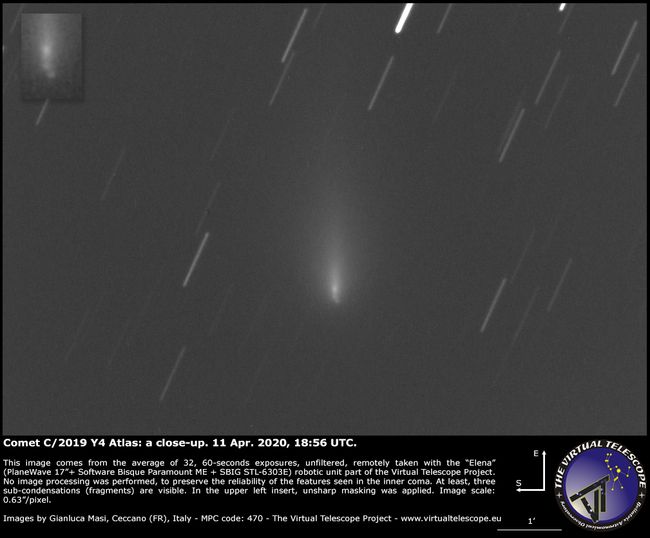As Comet ATLAS Crumbles Away, Comet SWAN Arrives to Take its Place for Skywatchers
Care for a comet trade?
By Joe Rao – Skywatching ColumnistSPACE.COM — April 18, 2020 | As I write these words, Comet ATLAS, which a month ago looked like it might evolve into the first really bright naked-eye comet in a decade, is now falling apart. It has fragmented into several pieces, quickly dispersing and not leaving behind enough material to produce any kind of significant display.
Astrophotographer Chris Schur captured this view of Comet Atlas on April 9, 2020, from Payson, Arizona. “The comet appears quite diffuse now, hopefully there will be something left to see near perihelion!” Schur told Space.com via email. (Image credit: Chris Schur (http://www.schursastrophotography.com))Soon after this comet was discovered near the end of 2019, it brightened at an almost furious pace. That combined with the fact that it was traveling in the same orbit as the “Great Comet” of 1844 suggested that it might be a fragment of that famously spectacular comet, and that by the spring it might evolve into a beautiful celestial showpiece that could possibly excite the world as well as inject some new interest and exposure to the science of astronomy.
Sadly, those expectations will not be met.
Once again, the fickle, unpredictable nature of comets came into play as we here at Space.com couched our initial projections as to what might — or might not — happen concerning the future of Comet ATLAS.
The Virtual Telescope Project captured this view of Comet Atlas’ shattered nucleus on April 11, 2020. (Image credit: Gianluca Masi/Virtual Telescope Project (www.virtualtelescope.eu))Back in another time, astronomers probably would have relied on one particular set of predictions as to how bright the comet might ultimately get. However, during February and especially March, in this age of an internet run amok, we were seeing radically conflicting information and opinions from both bona-fide and “wannabe” experts. Some had suggested that ATLAS might rival Venus or even the moon in brightness!

